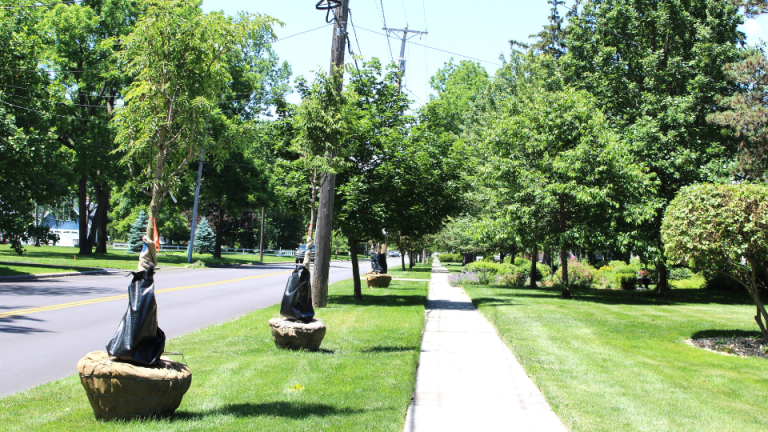"The best time to plant a tree is 50 years ago.
The second best time to plant a tree is now."
The Urban Forest:
A concerted effort is underway to rebuild Maumee’s tree canopy. Since 1990, the city’s tree canopy has fallen over 30 percent, which reduced the overall canopy from 31 percent to 21 percent. The emerald ash borer decimated the city’s urban forest and the removal of dead or diseased trees has outpaced plantings until just a few years ago.
With guidance from the Maumee Environmental and Tree Advisory Commission, the goal over the next ten years is to recoup those losses and get the tree canopy back to 30 percent or more.
Street Tree Design Plan:
A street tree design plan helps Maumee plan, plant, and manage our urban forest more effectively, leading to a healthier, more diverse, and sustainable tree canopy that will provide long-term environmental, social, and economic benefits.
How it works:
By identifying site quality, we can better match tree species to appropriate locations. For low-quality sites, planting resilient tree species is recommended, while high-quality sites are ideal for introducing new species to the urban forest or planting trees that are more vulnerable to urban stresses. Additionally, a street tree design plan improves our ability to manage individual trees by pinpointing areas with poor soil quality that require attention. Site assessments will also allow us to evaluate the effectiveness of management actions aimed at improving soil conditions.
Maumee’s Street Tree Design Plan:
To develop a street tree design plan in Maumee, members of the city’s Environmental and Tree Advisory Commission have spent several months working with Steph Miller, the Ohio Regional Urban Forester with the Ohio Department of Natural Resources, Division of Forestry.
Trees act as a sponge and soak up rainwater, which keeps excess water out of the city’s sanitary system and thus aiding in the reduction of stormwater infiltration into our sanitary system. A large tree can absorb a significant amount of water over the course of a year, with estimates varying depending on the species, size, climate, and growing conditions. On average, a mature tree can absorb between 10,000 to 26,000 gallons of water annually.
(Images courtesy of Urban3)
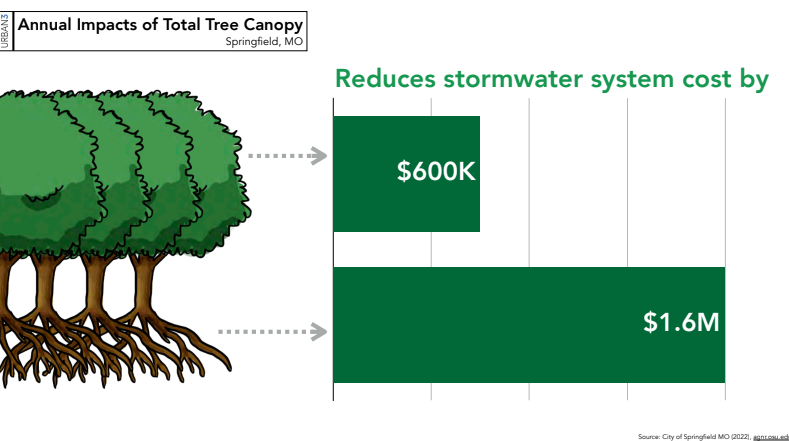
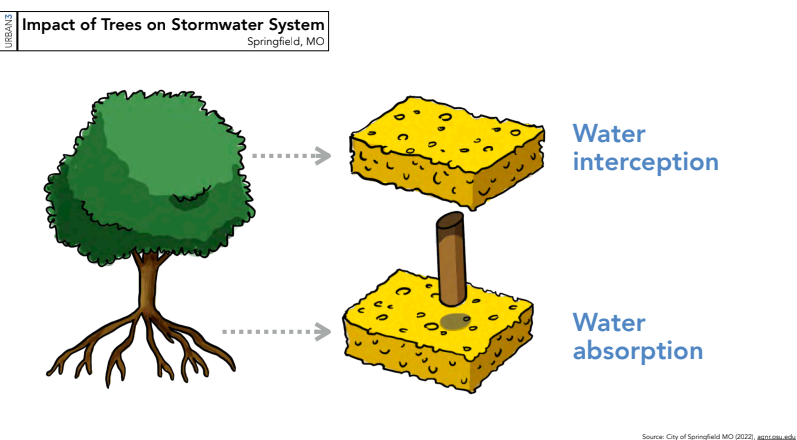

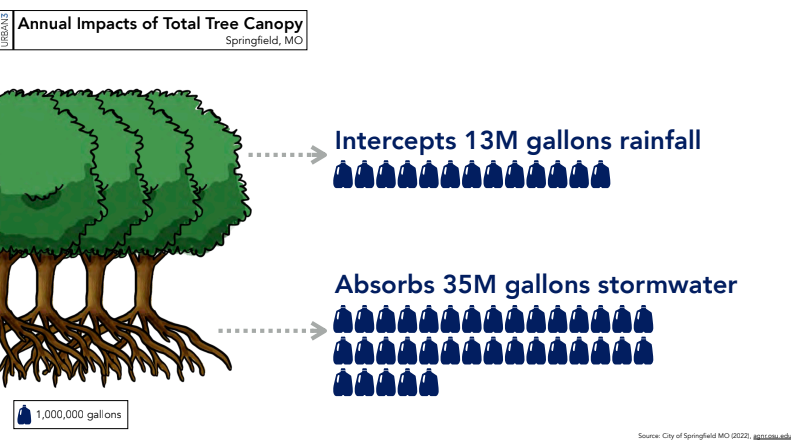



Why Plant Trees?
Do you own your home and benefit from it being worth more?
Trees increase property values.
Do you like driving around on smooth streets?
Trees protect street infrastructure by preventing them from boiling in the summer sun which makes it not degrade so quickly.
Do you prefer not to have traffic speed down your residential street?
Trees create vertical elements that naturally slow cars.
Do you prefer quiet especially when resting?
Trees suppress sound.
Do you use your air conditioner when it gets too hot or look for shade in the summer to get out of the sun when outside too long?
Trees decrease heat islands, cool your home, and allow for better cooling of space and buildings. Also, because the tree is shading your home, it makes for lower energy bills because your AC doesn’t have to work so hard.
Do you prefer a safe neighborhood?
Trees are known to deter crime and prevent violence.
Do you or anyone you know suffer from mental health problems or need reasons to smile more?
Trees make people happier and support better mental health.
Do you prefer to be healthy and not suffer from respiratory issues, especially from pollution?
Trees clean the air by filtering pollutants and fine particles.
Do you prefer a dry basement, no standing water in your yard, and not having the sewer systems overrun in large rain events?
Trees absorb rainwater quickly and prevent erosion.
Do you enjoy watching birds and other wildlife around your neighborhood?
Trees support important wildlife by providing shelter, a place to raise their young, and a place to find food.
Trees Planted In the Public Right-Of-Way
Street speed, overhead utility wires, soil makeup, and size of the area designated for planting are just a few of the many elements considered when trees are planted in the city right of way. In addition, a master planting design is underway in Maumee to help guide the city’s tree-planting program. A wide variety of species and genotypes, which are also being planted, helps to ensure that if there is a pest or fungus that knocks out a type of tree, the entire tree canopy is not decimated in a neighborhood.
What If Tree Roots Damage Or Interfere With the Sewer?
Trees DO NOT damage sewer lines!
A tree root will get into sewer lines because the sewer line is cracked and leaking and needs to be lined, replaced, or repaired.
No matter how well you care for your sewer lines, a time will come when the piping will need to be corrected whether or not a tree is planted nearby.
Who Is Responsible For Caring For The Trees?
The City of Maumee is responsible for pruning, trimming, mulching, watering, and removing trees.
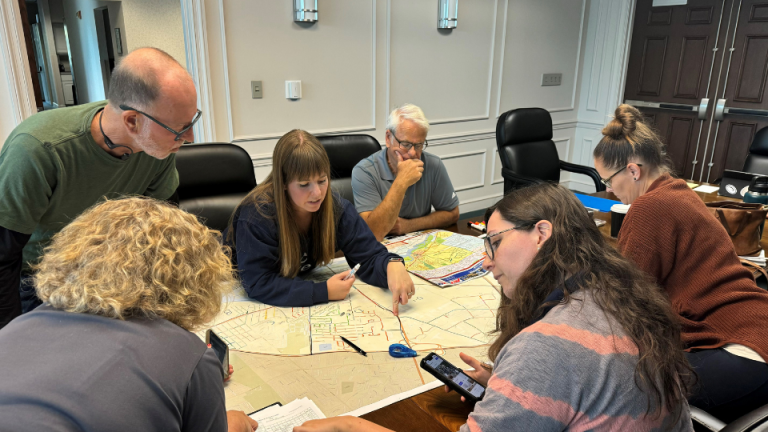
Members of the Environmental & Tree Advisory Commission work to develop a street tree design plan.
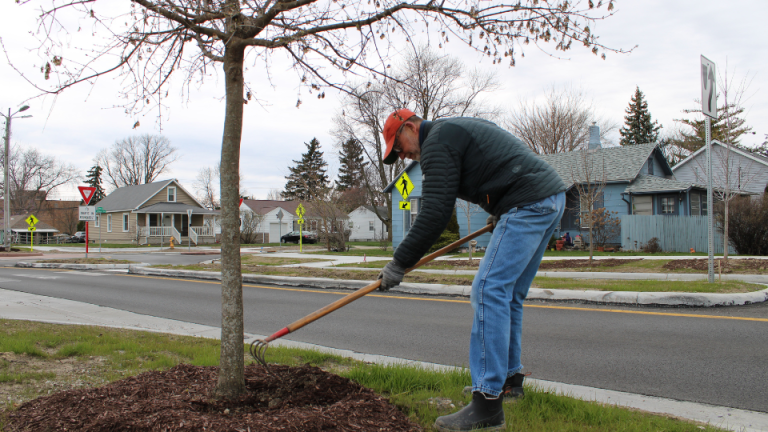
Over the next ten years, Maumee is hoping to get the tree canopy back to 30 percent or more.
